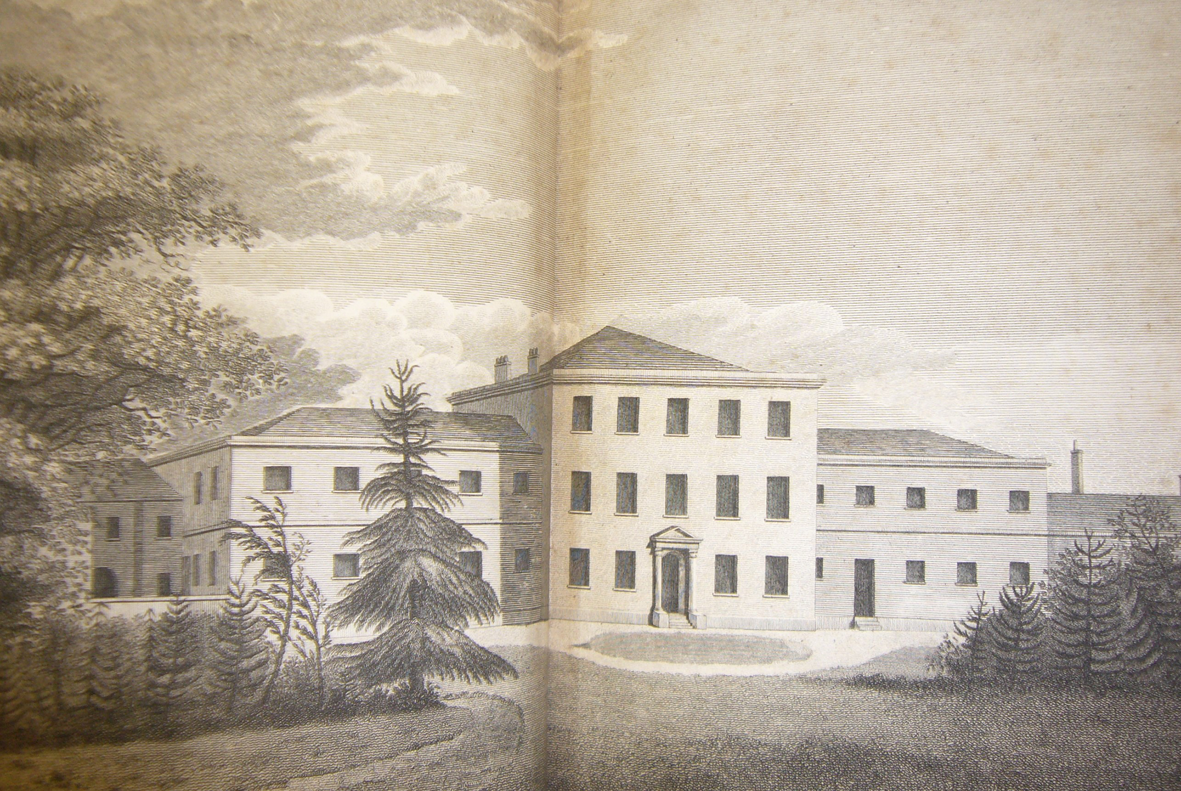The York County Asylum was opened in 1777 following a public appeal. The hospital was accommodated in a splendid building in the style of a country house designed by the prominent local architect John Carr. Before long there were rumours that it was not well conducted. In 1791 a member of the Religious Society of Friends died in the asylum and there were suspicions that she had been neglected. In 1792, led by one of their members, William Tuke, the Society resolved to establish an asylum of its own in which gentler methods of management would be employed.
Donations were invited from Meetings of Friends in Yorkshire, in the British Isles more widely and from abroad. John Bevans, a Quaker builder and surveyor of Plaistow, Essex, was appointed to design and build the hospital. The building consisted of a central administrative block with wings on each side for men and women (Fig. 1). All patients had single rooms set on both sides of a central corridor and there were day rooms for various activities. Care was taken to design fittings that would not be harmful to patients. The hospital opened in May 1796. Patients paid fees according to the type of accommodation they occupied. A superintendent, a housekeeper and a physician were appointed. The physician's role was to care for patients’ physical health.

Fig. 1 From Samuel Tuke's Description of The Retreat, an Institution Near York, for Insane Persons of the Society of Friends, Containing an Account of its Origins and Founders, the Modes of Treatment, and a Statement of Cases (1813). I thank the University of Glasgow for permission to reproduce this illustration [Sp.Coll NH.12.3] and for the kind assistance of the staff of Special Collections.
In 1813 Samuel Tuke, grandson of William Tuke, published Description of The Retreat, a report on the work of The Retreat in its first 15 years. Tuke outlined the regimen of care: the use of fear to control patients was rejected; patients’ attempts to control themselves were encouraged; individuals were treated as rational beings as far as possible; patients were not urged to reject their feelings and delusions; and a good diet, exercise, occupation and social activities were provided. Religious observance and reading were recommended but excessive stimulation was to be avoided. The use of manacles and chains was forbidden, but staff had to resort to seclusion, the strait waistcoat and forced feeding for severely disturbed patients. He commented that it is difficult to give staff confidence in the method of gentleness in such circumstances. He recommended that carers ‘call into action every remaining power and principle of the mind and to remember, that in the wreck of the intellect, the affections not infrequently survive’. Tuke designated care at The Retreat ‘moral treatment’.
In reviewing admissions, Tuke recorded patients with depression, mania and impairment of intellect, but there is no separate category of psychosis. Admission policies excluded ‘idiots’. He noted the effects of intemperance, epilepsy and genetic factors in suggesting a poor outcome as well as the link between physical and mental health. Tuke, a layman, showed a remarkable grasp of clinical aspects of care, diagnosis, aetiology and prognosis.
The comments of visitors to The Retreat are recorded. William Stark, an architect, and Andrew Duncan, a physician, were each concerned in the planning of new hospitals for the insane in Scotland. Both were impressed by the regimen of care rather than the design of the buildings. Stark reported to a meeting in Glasgow: ‘It is a government of humanity and consummate skill, and requires no aid from the arm of violence or exertions of brute force’.
The influence of The Retreat in the care of the mentally ill has been enormous and far outweighs the modesty of its beginnings. The Retreat ceased to provide in-patient services in 2018.





eLetters
No eLetters have been published for this article.